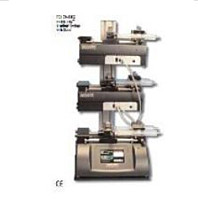Local Gene Delivery of Recombinant Adenoviruses to the Rat Carotid Artery In Vivo
互联网
544
A number of animal models are available to investigators wishing to study the use of gene transfer to prevent neointimal formation after vascular injury. The majority are models of primary vascular injury rather than the human situation, where recurrence of a stenosis occurs in an abnormal blood vessel treated by angioplasty. The main animal models used to study vascular balloon injury or angioplasty are the rat carotid, the rabbit iliac, the pig coronary and carotid models, and, less frequently, the dog coronary and primate saphenous or iliac models. A healthy level of skepticism exists about many of these animal models following the success of angiotensin-converting enzyme inhibitors in preventing neointima formation in the rat model but their failure to prevent human restenosis (1 ,2 ). Each model, however, has a particular suitability to investigate different aspects of the balloon injury process and all are suitable for gene transfer studies.









